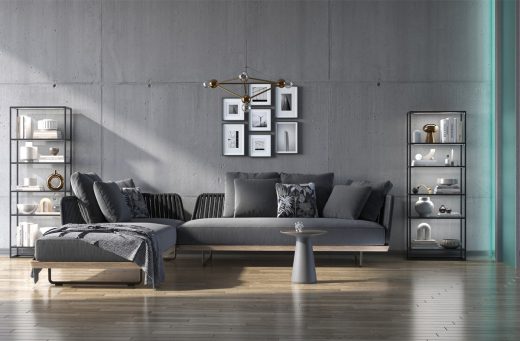How to create flexible modern workspaces in commercial construction, Workspace interior design style
How to Create Flexible Modern Workspaces In Commercial Construction
7 October 2024
Space is the most critical factor in any commercial building, be it office, retail, or even an industrial building. Architecture and interior design matter a lot for smooth functionality, the productivity of employees, and customer experience. Optimizing space is about creating a functional, adaptive, and aesthetic environment, not just fitting more in less. Herein, we try to explore some smart layout and design ideas that will help in optimizing space in your commercial building.
Spaces for Versatility
In today’s business world, a lot of companies have a decided advantage when their respective workspaces can be adapted to their many different needs. In that respect, workspaces with flexible features can incorporate modular furniture that includes desks, walls, and shelving units that are able to be moved around easily according to task.
As needs are always changing, it is essential for growing companies or businesses. This can be accomplished with an open floor plan by adjusting for collaborative areas and private workstations, while retail store displays can be switched out seasonally or during special promotions.
Maximize Natural Light to Boost Productivity and Energy Efficiency
It improves employee productivity, gives a better experience to the clients, and saves energy. Large windows, glass partitions, or skylights are some of the facilities that allow natural light into the space, which provides openness and an invitation.
It adds warmth to a room while reducing reliance on artificial lighting. The long-term financial savings from using sunlight as a primary light source are often substantial. In a retail setting, natural light may enhance the appeal of merchandise and encourage customers to linger and shop around.
Minimize Congestion through Effective Layout
Efficient traffic flow within the building improves productivity. A good design eliminates congestion, allowing smooth traffic flow of employees, customers, or machinery.
For office settings, shared spaces, such as meeting and break rooms, are best positioned to encourage interaction without necessarily interfering with the work of individuals. In retail settings, traffic flow can be rationalized to guide customers, with increased purchasing chances, through strategic product placement. In industrial buildings, clear pathways and organized storage areas translate into greater safety and efficiency.
Energy Efficiency and Optimizing Space
Insulated Metal Panels represent one of the more practical solutions for commercial buildings that helps resolve certain tasks in an energy-efficient manner. They are multi-functional, carrying both structural and insulating benefits that can help businesses save space while enhancing energy efficiency.
One of the major benefits derived from incorporating the use of IMP panels into your building design is that it inherently provides the ability of such panels to combine in one element both insulation and structural strength, reducing thereby the dependency on additional layers which provide insulation. IMPs save energy by maintaining a stable interior temperature, reducing strain on heating and cooling systems.
Use Vertical Space for Storage and Functionality
Vertical space in commercial premises is seldom utilized. Availing the vertical storage options augments the capacity without increasing the building area.
In offices, these are vertical shelving units or cabinets freeing up the floor to make the space appear larger. In retailing more products can be displayed using high shelving, while industrial facilities also make use of vertical storage racks that optimize their inventory.
Use Multi-Purpose Facilities
Where space may be at a premium, it is very good to have those areas that can serve more than one purpose. For instance, office spaces can be built in such a way that their break rooms double as unofficial meeting spaces, while conference rooms can serve both large presentations and smaller team discussions. Customer service desks in retail can include promotional displays or storage.
All these multifunctional spaces minimize the demand for independent, single-use, dedicated rooms, which maximizes overall utility of the building.
Conclusion
Essentially, this implies that effective space optimization in commercial settings calls for deep thinking and the ultimate use of creativity. In addition, businesses can bring flexibility into the workplace, maximize on natural light, enhance traffic flow, and make use of vertical storage to develop efficient and pleasing environments. Furthermore, investment in modern materials such as IMPs pays long-term benefits in terms of energy efficiency and functionality.
Ultimately, successful space optimization is not about fitting more in less but about creating a space supportive of greater productivity and well-being for all while being in tune with the long-term goals of the business. Companies will ensure their commercial spaces are ready to support growth and innovation by focusing on smart layout and design strategies.
Comments on this guide to How to Create Flexible Modern Workspaces In Commercial Construction article are welcome.
Office Desk
Office Desk Design – selection
Inviting reception desk design
Manual height adjustable all-in-one standing desk
How to pick the perfect Glass desk for the office
Furniture
Furniture Articles
Choosing the right restaurant furniture
Choose best restaurant furniture for more tourists
Building Articles
Comments / photos for the How to Create Flexible Modern Workspaces In Commercial Construction page welcome.







